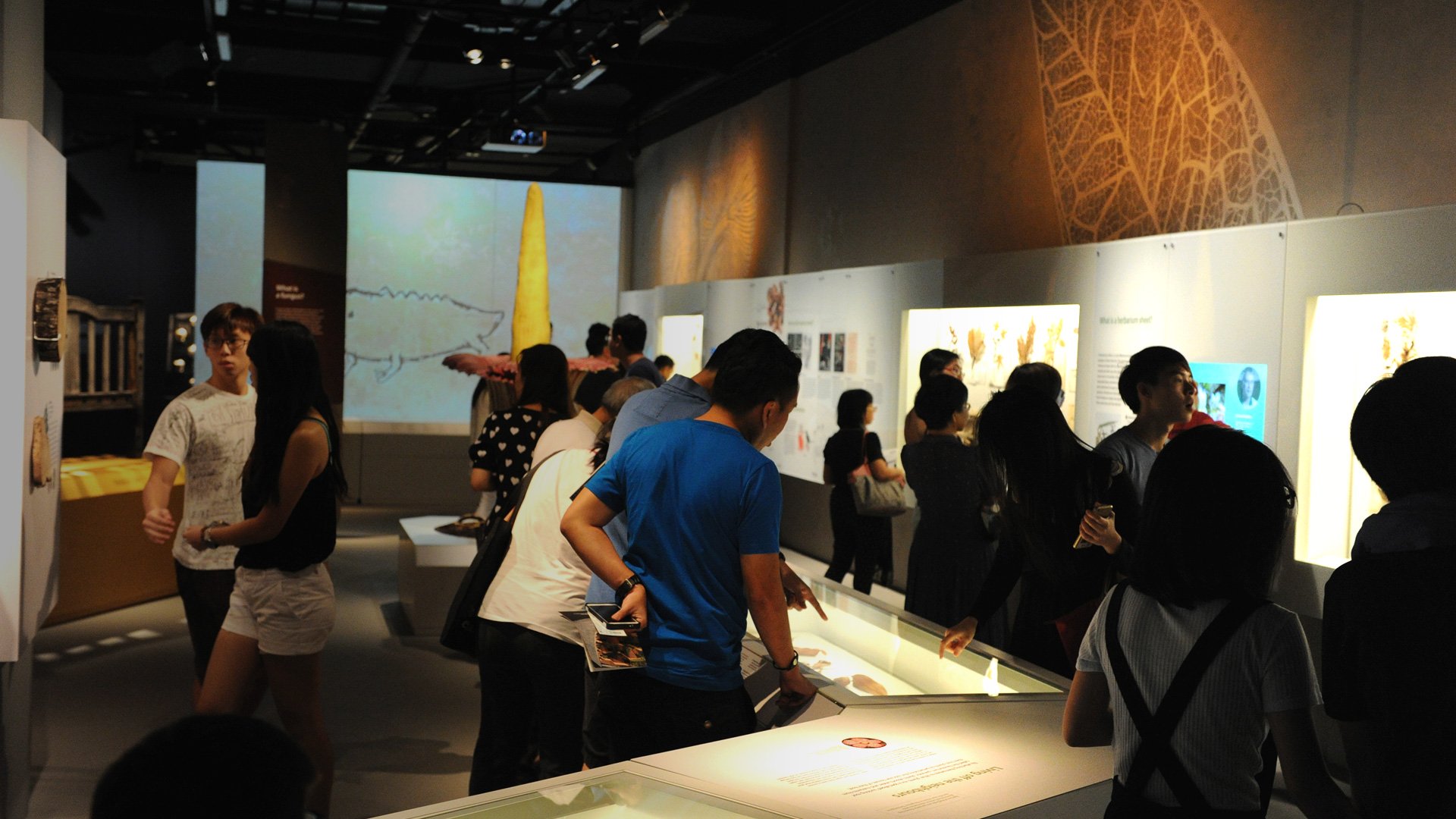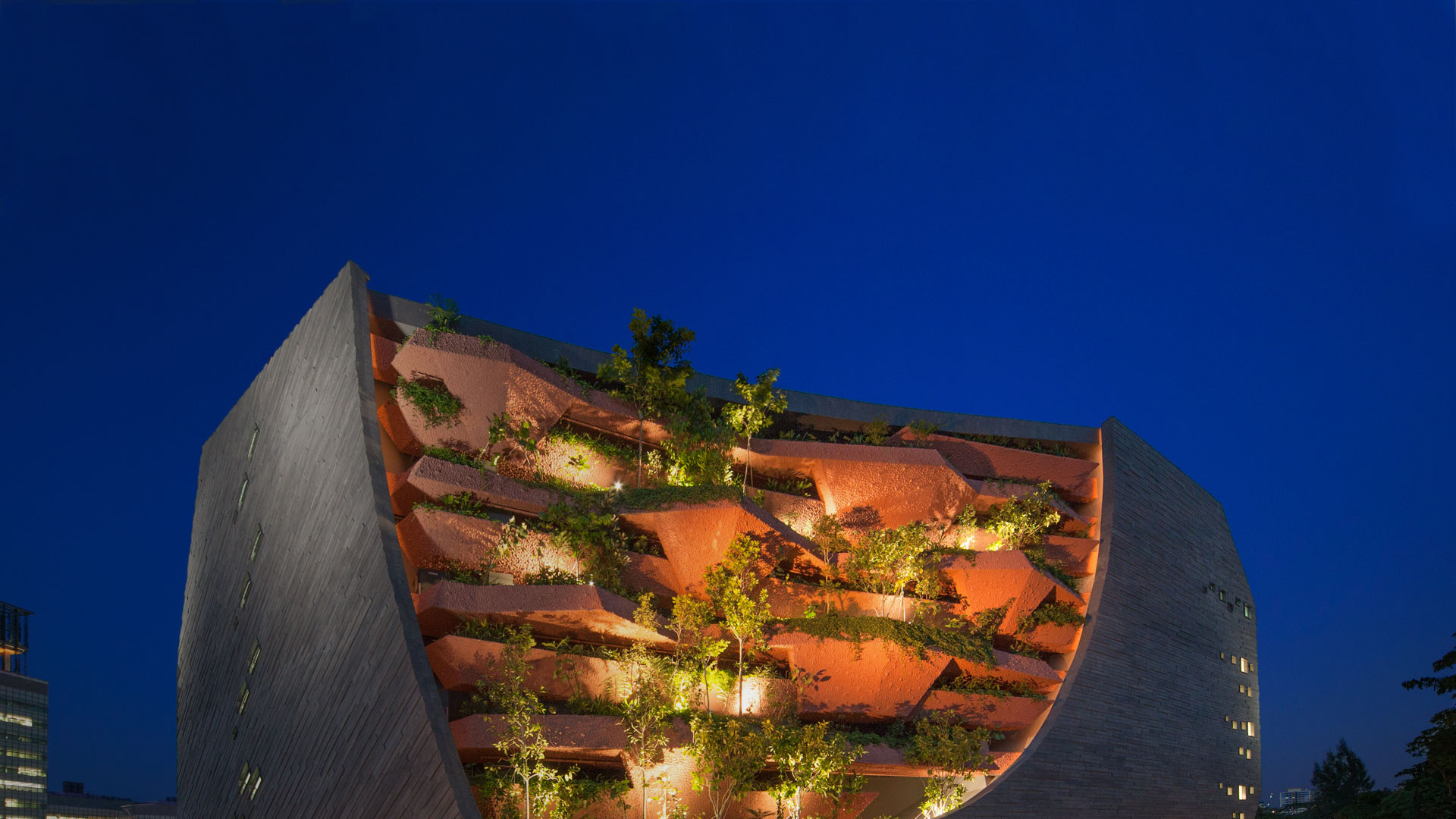Insects & Terrestrial Arthropods
The entomological collection in the LKCNHM consists mainly of insects, but also includes other terrestrial arthropods with the exception of crustaceans. The Raffles Museum’s former insect collection was sent to the Selangor Museum in 1926 in exchange for their mammal and bird collection.
About 12,000 insect specimens at the LKCNHM were inherited from the Raffles Museum, including some fine butterflies collected by R. Hanitsch, J. C. Moulton, M. W. F. Tweedie and M. J. V. Miller. The majority of the entomological collection was collected from the Malay Peninsula and Borneo, with a small collection from Christmas Island made by C. A. Gibson-Hill.
Recently acquired entomological material includes some 20,000 insect specimens from “Paddy” D. H. Murphy, and another 35,000 specimens obtained by various researchers in the last few decades. Murphy’s collection was accumulated over the last 30 years. Many museums (especially the Natural History Museum in London) and other entomologists have benefited from his work. The insects of Singapore, especially the mangrove species, form the strength of his collection. Hymenoptera, Orthoptera, Isoptera, Odonata, Blattaria and some 10,000 specimens of Diptera are also well-represented. Many insect species were named after D. H. Murphy to honour his contributions in entomology.
The Hemipteran collection in the LKCNHM has been strengthened by the work on aquatic and semi-aquatic bugs by Lanna Cheng and C. H. Fernando in the 1960s and in recent years, by C. M. Yang. Now at 30,000 specimens, this collection is growing from contributions made through fauna surveys with foreign collaboration, for example, expeditions to Endau-Rompin, Belum and Maliau Basin. The collection has also expanded from on-going collaborative work with D. Kovac, H. Zettel and other entomologists.
Michael Balke, L. Hendrich and C. M. Yang are conducting surveys and making inventories of the aquatic coleopteran fauna of Singapore, Peninsular Malaysia and Sabah. Hence, there is a good representation of identified aquatic beetle material in the LKCNHM. Most of other beetles in the collection, however, are waiting to be sorted and identified to the species. The LKCNHM’s collection of stick-insects (Phasmida) has been enhanced by contributions from F. C. Seow and others in recent years. The entomological section of the LKCNHM has been actively conducting surveys to document the remarkable diversity of Odonata, aquatic Hemiptera and Coleoptera in the Southeast Asian region.
Spiders, mites, centipedes and millipedes also form a part of the entomological collection. Although the collection is small, it contains some important historical material including types. Arachnids collected in the 1920s by H. C. Abrahams and others have been studied by E. Reimoser, F. Kopstein and C. F. Roewer. A collection of centipedes and millipedes was contributed by Moltze Y. S. Wang. More recently, M. Nadchatram donated a collection of mites, and J. A. & F. M. Murphy presented a collection of spiders.
Presently, there are about 70,000 specimens in the LKCNHM’s entomological collection. While many specimens are mounted on pins, others are preserved in vials of alcohol. Microscopic taxa like mites are mainly mounted on glass slides. All entomological specimens have been sorted according to their various taxonomic levels.
SELECTED PUBLICATIONS
CORBET, A. S. & H. M. PENDLEBURY, 1992
The Butterflies of the Malay Peninsula. Fourth Edition
Malayan Nature Society. 595 pp
FERNANDO, C. H. & L. CHENG, 1974
A preliminary study of the fauna and distribution of aquatic Hemiptera in Malaya and Singapore
Federated Museums Journal, 19: 21-44
KOH, J., 1989
A Guide to Singapore Spiders
Singapore Science Centre, 160 pp
MURPHY, D. H., 1990
The natural history of insect herbivory on mangrove trees in and near Singapore
Raffles Bulletin of Zoology, 38(2): 119-203
WANG, Y. S. M. & M. C. TANG, 1965
The millipedes of the Malay Archipelago and South Sea islands: Singapore, Sarawak and Sumatra
Quarterly Journal of the Taiwan Museum, 18: 399-452



